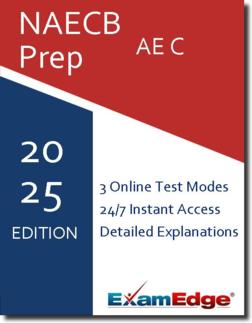NAECB AE-C (AE-C) Practice Tests & Test Prep by Exam Edge - Topics
Based on 29 Reviews
- Real Exam Simulation: Timed questions and matching content build comfort for your NAECB AE-C test day.
- Instant, 24/7 Access: Web-based NAECB Asthma Educator practice exams with no software needed.
- Clear Explanations: Step-by-step answers and explanations for your NAECB exam to strengthen understanding.
- Boosted Confidence: Reduces anxiety and improves test-taking skills to ace your NAECB Asthma Educator (AE-C).

Understanding the exact breakdown of the NAECB Asthma Educator test will help you know what to expect and how to most effectively prepare. The NAECB Asthma Educator has 150 multiple-choice questions The exam will be broken down into the sections below:
| NAECB Asthma Educator Exam Blueprint | ||
|---|---|---|
| Domain Name | % | Number of Questions |
| The Asthma Condition | 20% | 30 |
| Assessment Of An Individual With Asthma And Family | 26% | 39 |
| Asthma Management | 43% | 65 |
| Organizational Issues | 11% | 17 |


